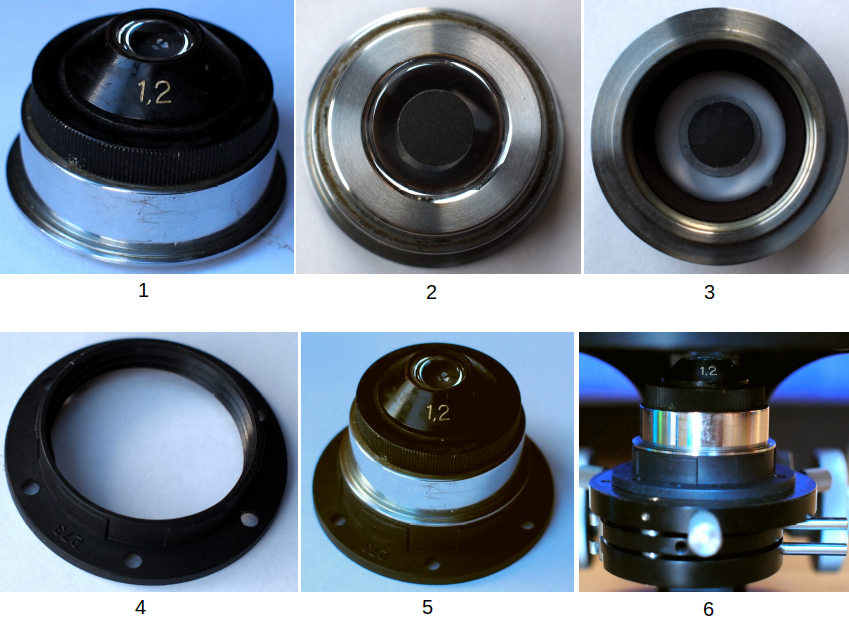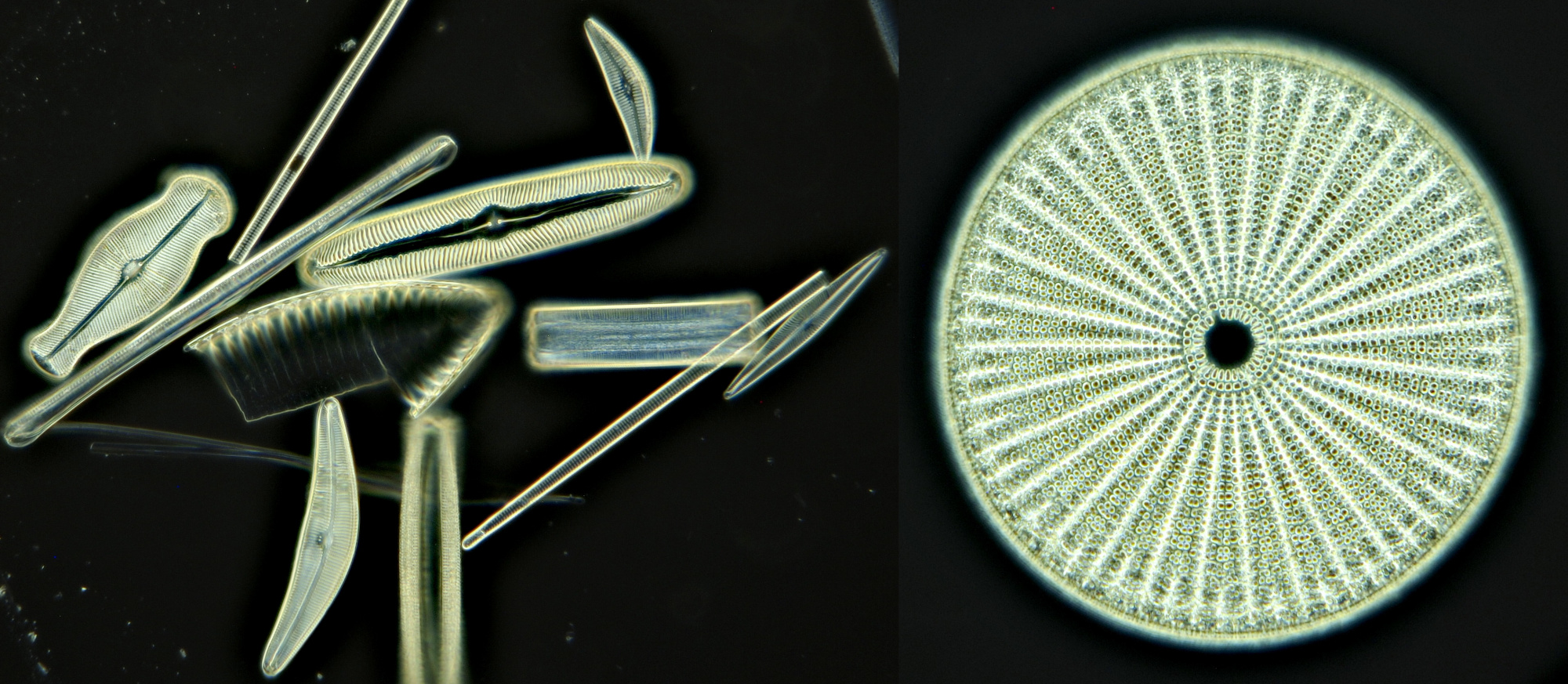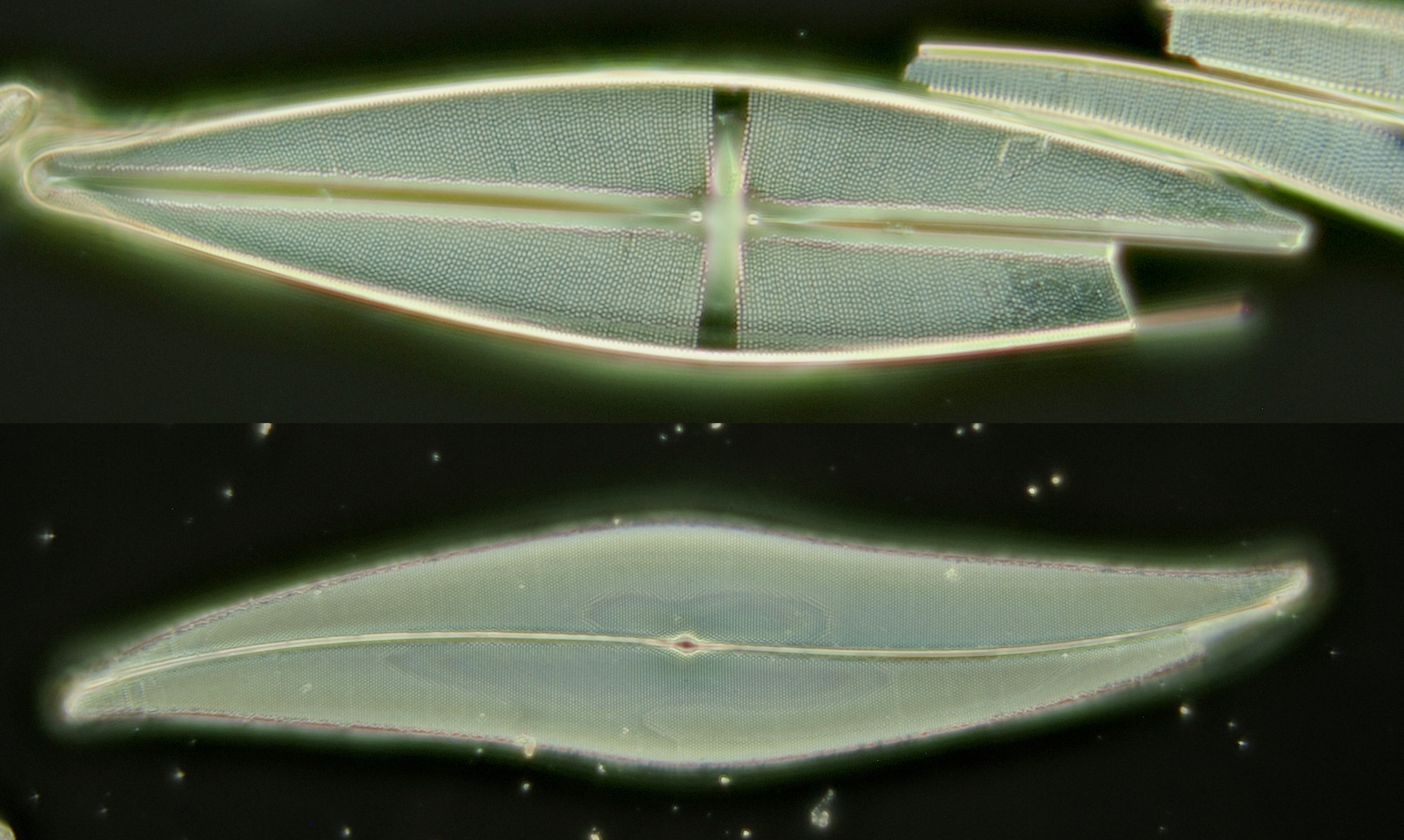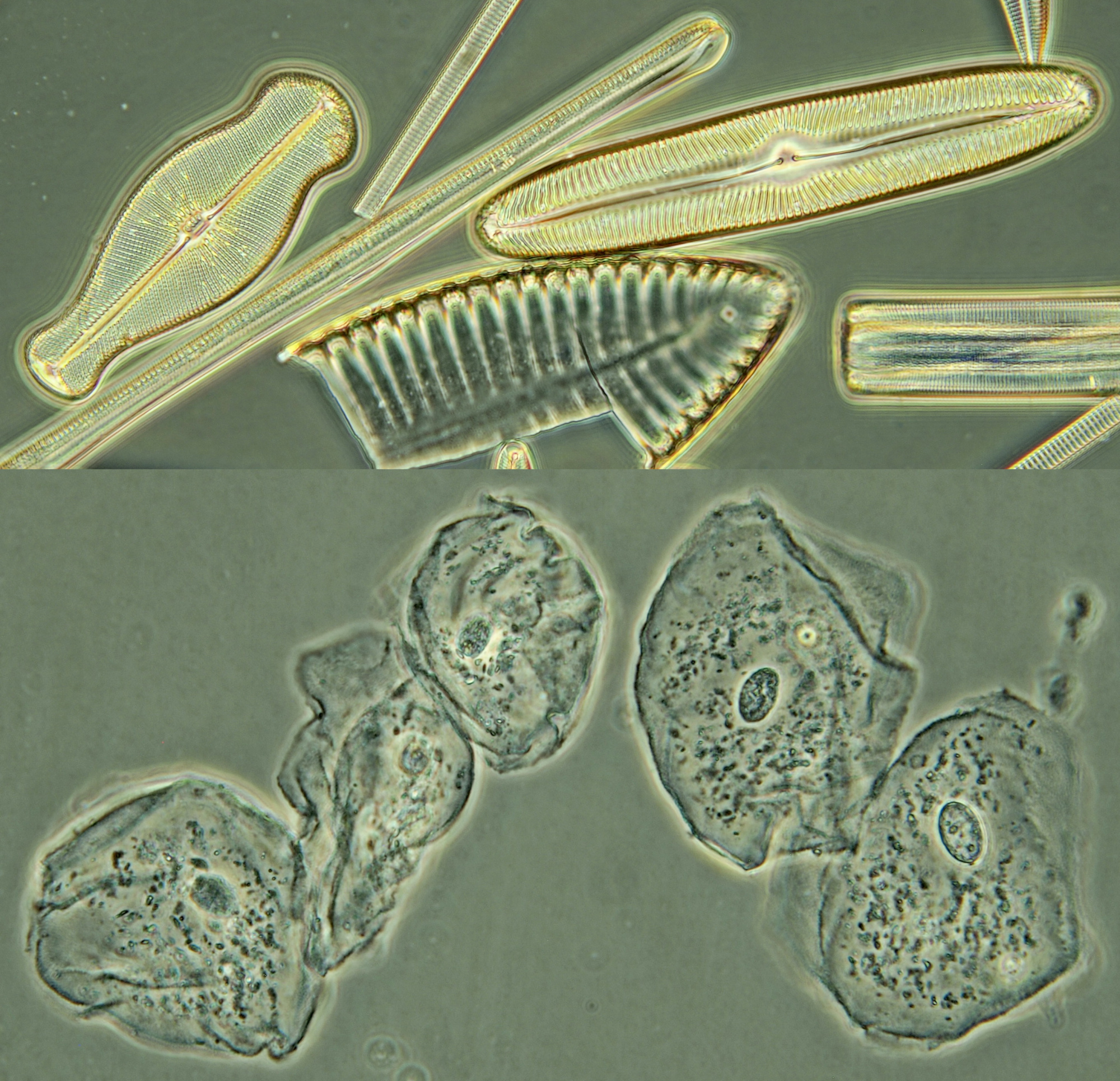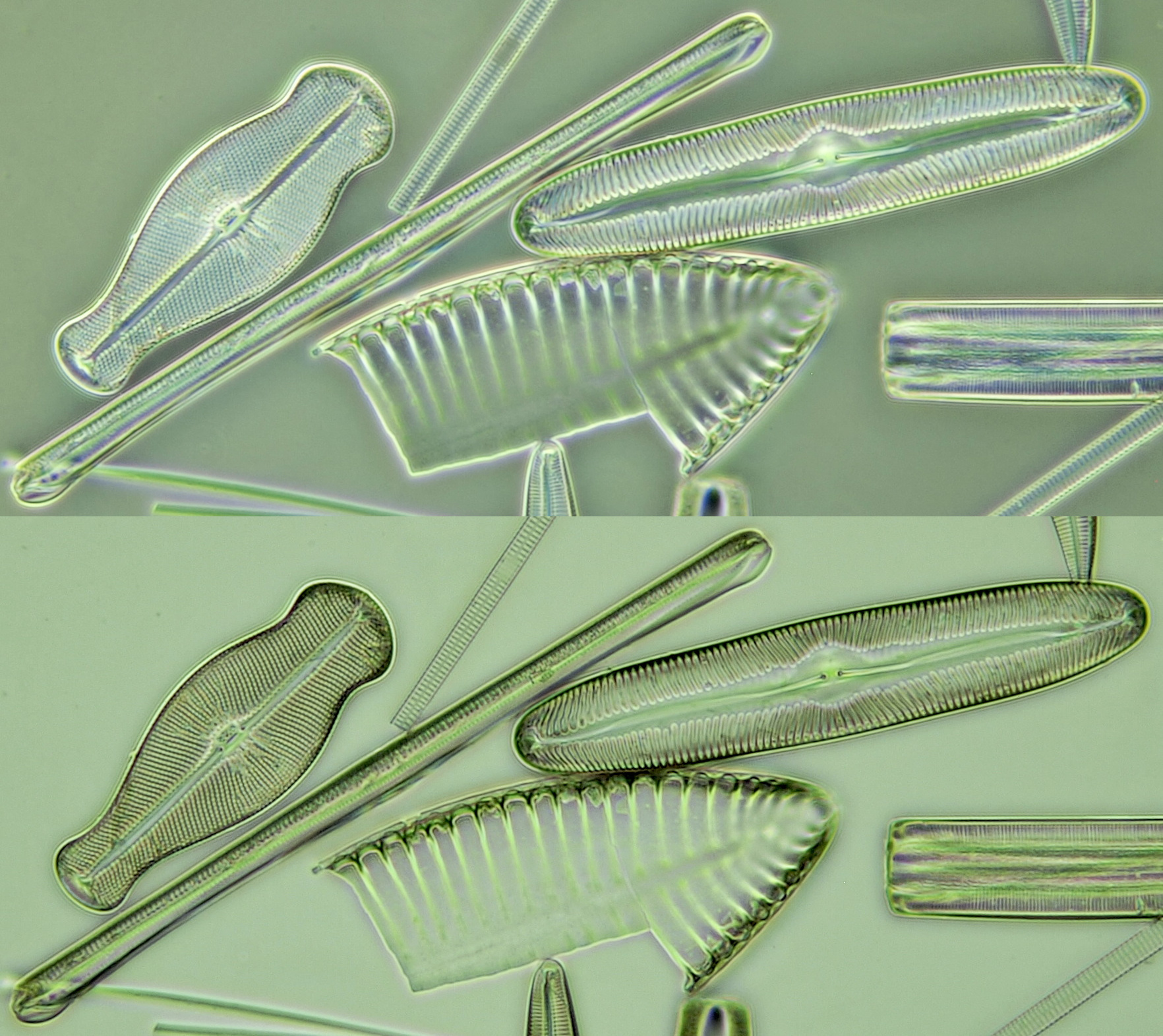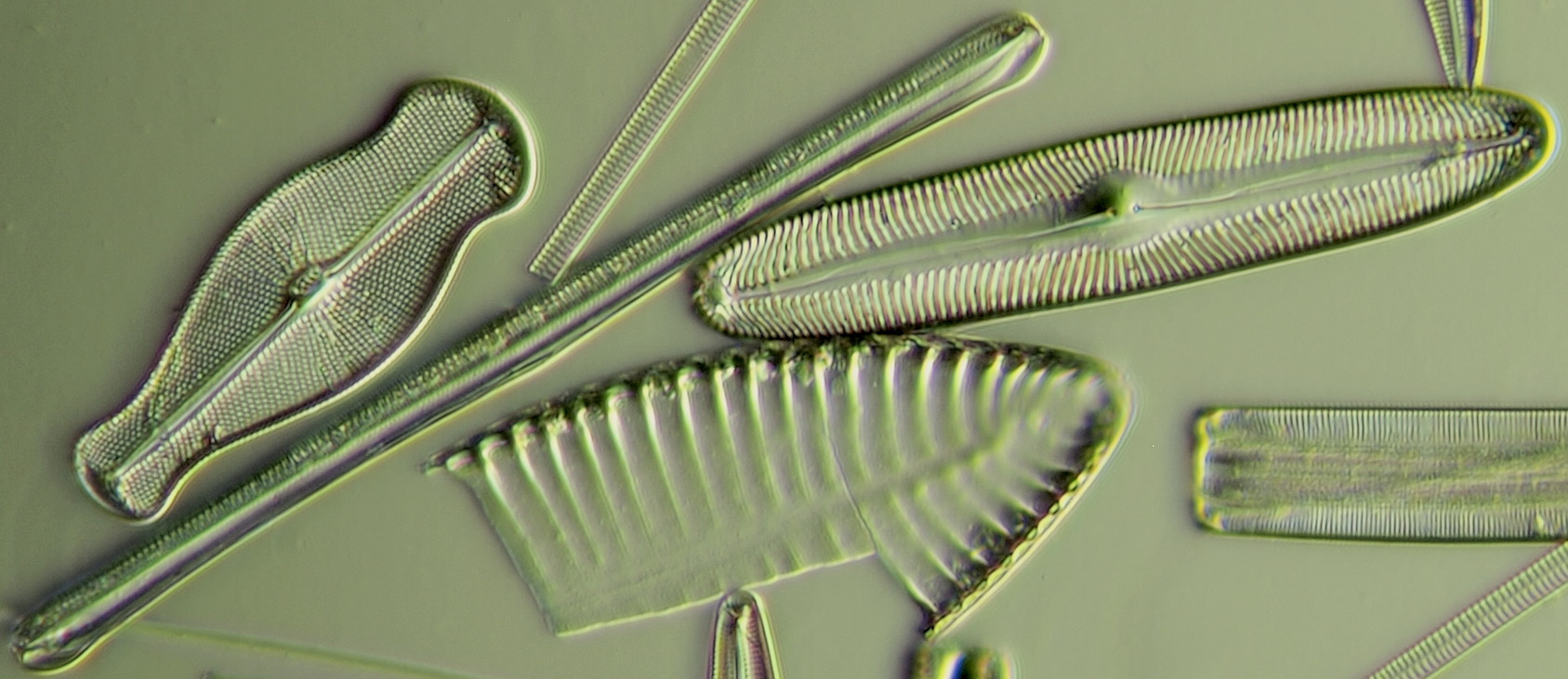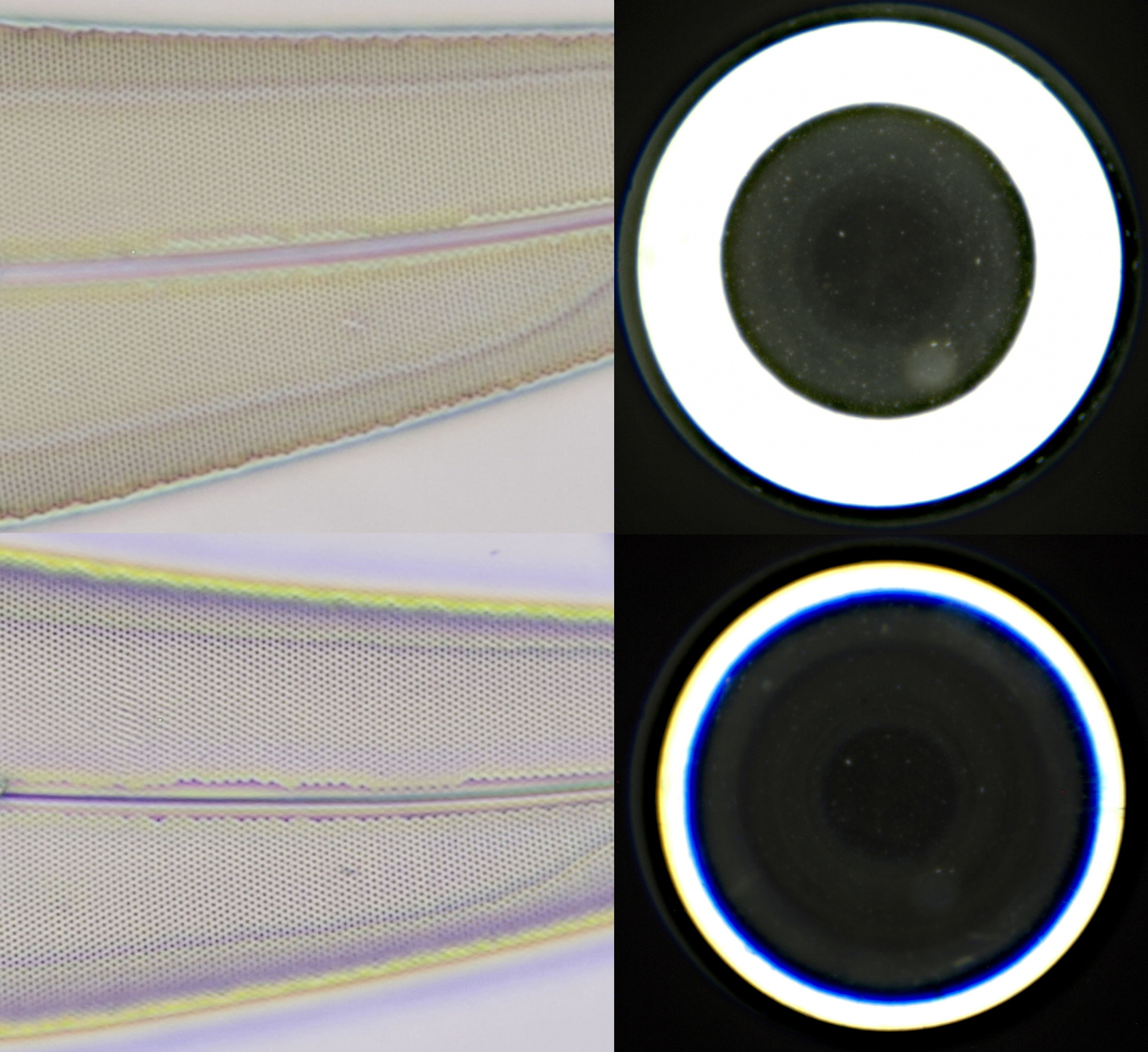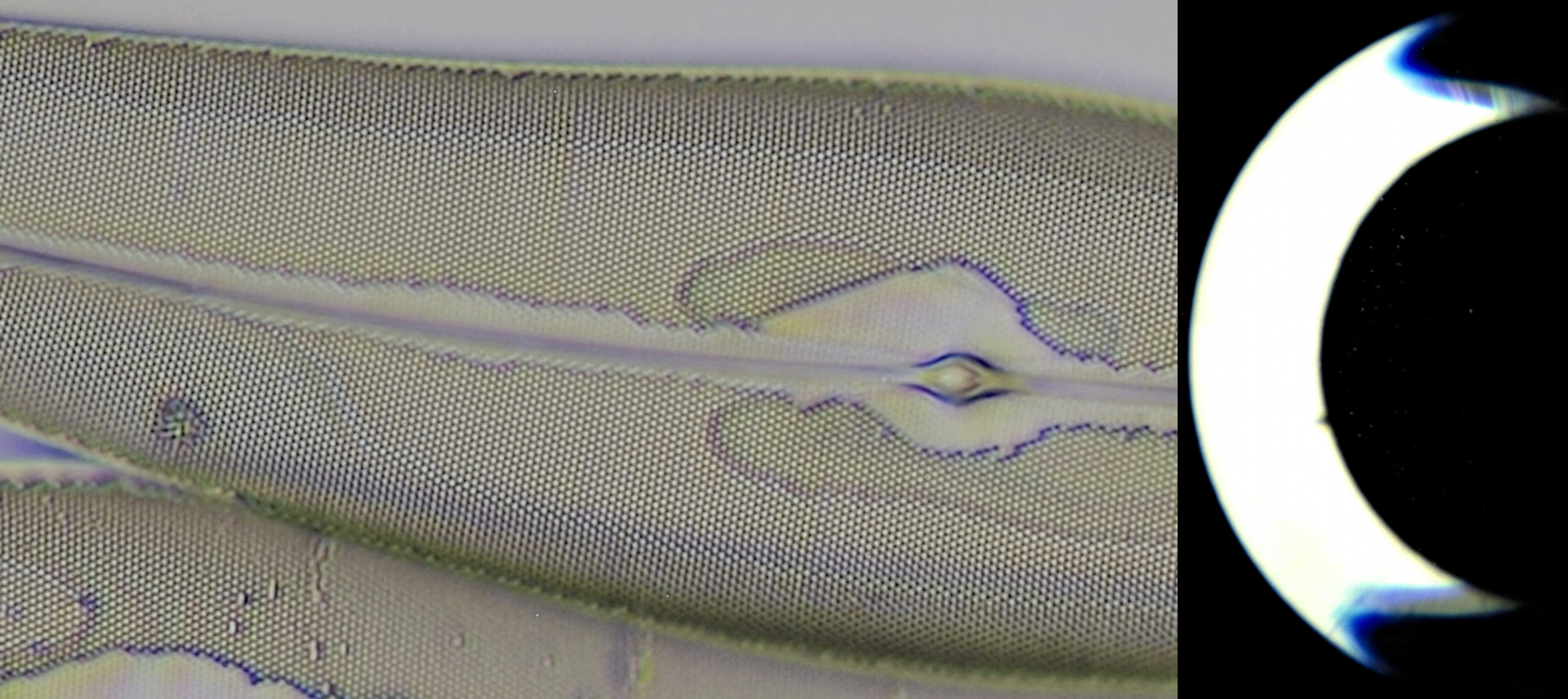Special condensers for phase contrast or darkfield microscopy can be quite expensive. A used Zeiss or Leitz phase contrast or darkfield condenser easily costs around 100 - 200 euros. But with a little creativity, nice results can be achieved with a normal Abbe condenser with an aperture of 1.2.
I once had an old Carl Zeiss Jena horseshoe microscope that had a condenser with a ruined diaphragm. A condenser without a diaphragm can still be used to regulate the aperture by adjusting the height of the condenser. But in the meantime, I had other plans for it and I decided to modify it for darkfield and phase contrast usage. To do so, all that is required are small round black stickers with a diameter of 12 mm. An Abbe 1.2 condenser consists of 2 lenses; a field lens at the bottom and a top lens. The top lens can be screwed off. To achieve darkfield illumination, the central light must be blocked and this can be done by putting the 12 mm black stickers exactly in the middle on both sides of the field lens. It’s also possible to use only one sticker but the background will be less darker.
The condenser had to be elevated slightly in order to use it on my Zeiss Standard GFL. For that, I used a part from a lamp socket. The height turned out to be just right. The condenser could be raised to the uppermost position with the condenser height adjustment mechanism without touching the slide. I just placed the condenser on the condenser holder of the Zeiss GFL without fixing it. Therefore, centering must be done by hand. This may sound clumsy but actually it works great and you have nearly as much as control over centering the condenser than with a special centering mechanism. And exchanging the condenser can be done very quickly!
In addition to darkfield illumination, the condenser can also be used for phase contrast and annular illumination. For this, the top lens must be screwed off. By varying the height of the condenser, the diameter of the illuminated ring, the condenser annulus, can be adjusted to match the diameter of the phase ring in objectives of different brands.
Fig.1. Modifying an old Abbe 1.2 condenser to be used for darkfield and phase contrast illumination. 1: Abbe 1.2 condenser without iris diaphragm. 2: Top lens screwed off and 12 mm sticker put on upper side of the field lens. 3: Round sticker put on the under side of the field lens. 4: Part of a lamp socket. 5: Part of lamp socket attached to the condenser to increase it’s height. 6: Condenser on condenser holder of the Zeiss Standard GFL.
Darkfield illumination
For darkfield illumination, the top lens must remain screwed on and good results are achieved up to a maximum objective aperture of 0.75. The results can be seen in the following images.
Fig.2. Diatoms in darkfield with a Zeiss Planapo 25/0.65. Right: Arachnoidiscus.
Fig.3. Stauroneis (top) and Pleurosigma angulatum (bottom) in darkfield photographed with a Zeiss Neofluar 40/0.75.
Phase contrast
To use the condenser for phase contrast the top lens must be screwed off. The condenser is subsequently lowered and centered until the annulus overlaps with the phase ring of the objective. By using a field diaphragm, the outer diameter of the annulus can furthermore be limited and additional fine adjustments can be made. I tried phase objectives from different manufacturers and they all gave a good phase contrast image. The following tests were done with phase 40x or 45x objectives from Zeiss, Leitz, Olympus, Meopta and Wild. Good results were also achieved with a Carl Zeiss Planapo 100/1.3 Ph3, here it is the combination of the setting of the field diaphragm and the height of the condenser that determines the optimal result.
Fig.4. Matching the condenser annulus with the phase ring of different objectives. A: Non-overlapping annulus and phase ring. By adjusting the height, the condenser is lowered until the annulus overlaps with the phase ring. 1: Zeiss Neofluar 40/0.75 Ph2. 2: Leitz EF 40/0.65 Phaco 2. 3: Olympus A 40/0.65 PL. 4: Meopta Ph 45/0.65 and 5: Wild 40/0.65 Ph.
Fig.5. Phase contrast images of diatoms (top) and cheek epithelial cells (bottom) photographed with Zeiss Neofluar 40/0.75 Ph2.
Fig.6. Phase contrast with Leitz EF 40/0.65 Phaco 2 (top) and Olympus A40 PL (bottom).
Fig.7. Phase contrast with Meopta Ph 45/0.65 objective (top) and Wild 40/0.65 Ph (bottom). Due to the brown-orange phase ring, phase contrast with Meopta looks very different.
Circular oblique illumination
With circular oblique illumination, also called annular illumination, central light is blocked and the specimen is illuminated at all sites with light that is coming from an angle. The light is delivered by a ring or annulus which causes a cone shaped illumination.
Maximum resolution is achieved when the outer diameter of the annulus matches the aperture of the objective. Annular illumination gives a increased contrast and from many objects a spatial impression is created. This pseudo 3-D effect can be enhanced even more by adjusting the illumination in a way that only a partial annulus delivers the light. It then becomes asymmetrical annular illumination. To achieve this, the top lens must be screwed off again.
Fig.8. Various settings of annular illumination with a Carl Zeiss Plan 25/0.45. By changing the height of the condenser, the diameter of the annulus can be adjusted. In image A, the condenser is at a higher position than in image B. C: asymmetrical annular illumination; only a part of the annulus is visible.
Fig.9. Diatoms photographed with a Carl Zeiss Plan 25/0.45 objective and annular illumination. Upper image: setting as in figure 8a. Lower image: setting as in figure 8b.
Fig.10. Asymmetrical annular illumination with a Carl Zeiss Plan 25/0.45. Annulus as in figure 8c.
If an objective 40/0.65 is used, the diameter of the annulus will be slightly smaller than the aperture of the objective. Nevertheless, also this setting increases contrast and resolution. For the following test, an old black Zeiss-Winkel 40/0.65 achromat was used.
Fig.11. Pleurosigma angulatum photographed with a Zeiss-Winkel 40/0.65 and annular illumination. By closing the field diaphragm of the Zeiss Standard GFL, the annulus becomes narrower as shown right below. This gives an even higher contrast.
To enhance contrast and visibility of fine details, the condenser is decentered and it’s height is increased. A partial annulus is created with a outer diameter that matches the aperture of a 40/0.65 objective, see figure 12.
Fig.12. Pleurosigma angulatum photographed with Zeiss-Winkel 40/0.65 and partial annular illumination.
Circular oblique illumination is especially beneficial for thin transparent objects and diatoms. The advantage of annular lighting is that the contrast increases while at the same time the resolution is high.
Fig.13. Cymbella photographed with circular oblique illumination and Zeiss-Winkel 40/0.65. Camera: Olympus PEN E-PL1.
Fig.14. From left to right: Pinnularia, Stauroneis and Arachnoidiscus. No apochromat, no Heine condenser, no stacking. An old simple Zeiss-Winkel achromat 40/0.65 and a low budget condenser is all it takes.
Conclusion
To apply different contrast methods, it is not always necessary to invest in an expensive universal condenser. A simple Abbe brightfield condenser can do more than is generally thought. A few simple interventions and some experimentation can quickly lead to surprising results and increase the visibility of certain details.
